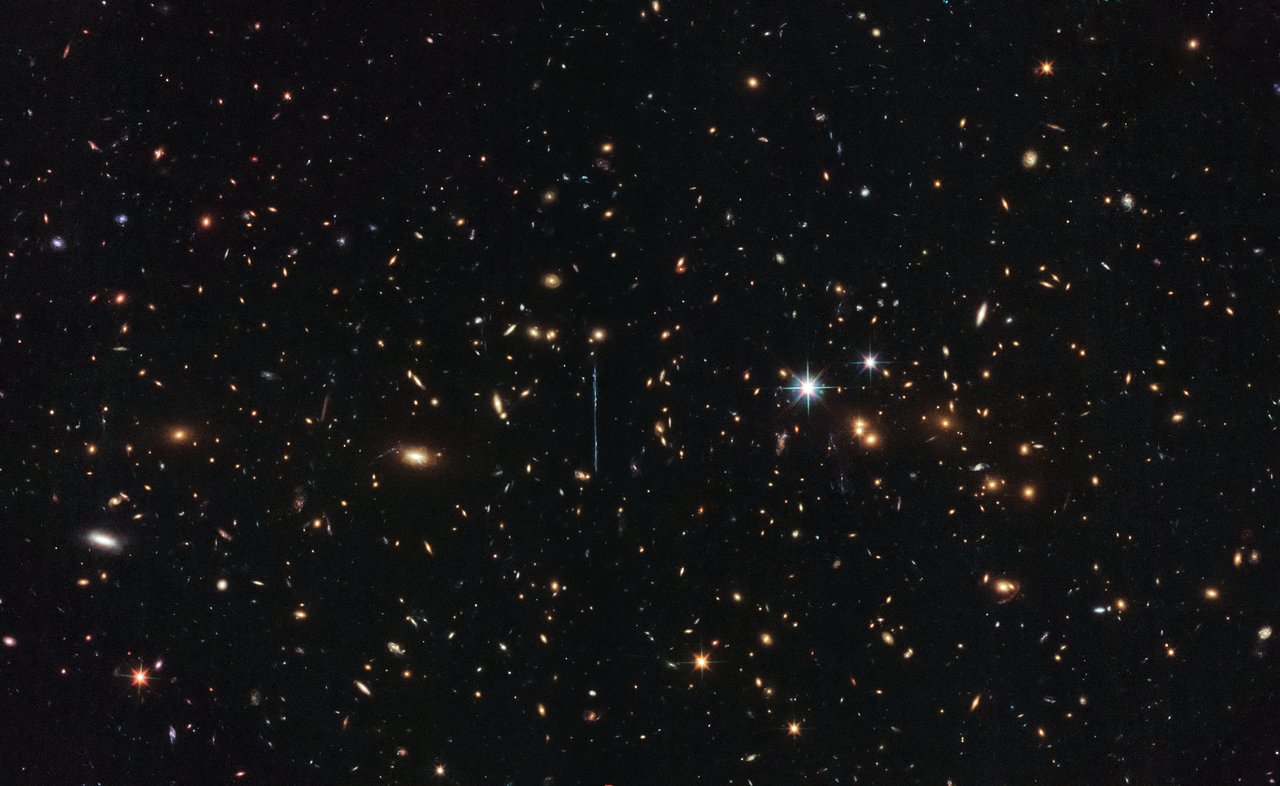Enormous 'El Gordo' Galaxy Cluster Captured in Hubble Image

An incredible photo from the Hubble Space Telescope showcases an enormous galaxy cluster that weighs in at a whopping 3 million billion suns.
Due to its massive size, the galaxy cluster has been nicknamed "El Gordo" (Spanish for "the fat one"). Research suggests the cluster is the largest, hottest and brightest X-ray galaxy cluster ever discovered in the distant universe, NASA officials said in a statement.
Galaxy clusters, groups of galaxies held together by gravity, are the biggest objects in the distant universe. These clusters take billions of years to form, as smaller groups of galaxies slowly move closer to each other, NASA officials said in the statement.
The El Gordo galaxy cluster — officially known as ACT-CL J0102-4915 — is located more than 7 billion light-years from Earth. The cluster was first discovered in 2012 by a trio of telescopes, the European Southern Observatory's Very Large Telescope, NASA's Chandra X-ray Observatory and the Atacama Cosmology Telescope in Chile. These observations showed that El Gordo is actually the product of two galaxy clusters, which are in the process of colliding at a speed of millions of kilometers per hour, according to the statement.
Dark matter and dark energy are believed to heavily influence the formation and evolution of galaxy clusters. Therefore, studying these clusters can help astronomers learn more about the elusive phenomenon, NASA officials said in the statement.
In fact, observations made by Hubble in 2014 showed that most of El Gordo's mass is concealed in the form of dark matter, according to the statement.
"Evidence suggests that El Gordo's 'normal' matter — largely composed of hot gas that is bright in the X-ray wavelength domain — is being torn from the dark matter in the collision," NASA officials said in the statement. "The hot gas is slowing down, while the dark matter is not."
Get the Space.com Newsletter
Breaking space news, the latest updates on rocket launches, skywatching events and more!
The recent image, released by NASA on Jan. 16, was captured using Hubble's Advanced Camera for Surveys and Wide-Field Camera 3. El Gordo is one of 41 giant galaxy clusters surveyed as part of the Reionization Lensing Cluster Survey (RELICS), which is a joint observing program led by the Hubble and Spitzer space telescopes, according to the NASA statement.
RELICS is designed to search for the brightest distant galaxies in the universe. This data will be used to identify faraway clusters of interest for further study by the James Webb Space Telescope, which is scheduled to launch sometime in the spring of 2019.
Follow Samantha Mathewson @Sam_Ashley13. Follow us @Spacedotcom, Facebook and Google+. Original article on Space.com.
Join our Space Forums to keep talking space on the latest missions, night sky and more! And if you have a news tip, correction or comment, let us know at: community@space.com.

Samantha Mathewson joined Space.com as an intern in the summer of 2016. She received a B.A. in Journalism and Environmental Science at the University of New Haven, in Connecticut. Previously, her work has been published in Nature World News. When not writing or reading about science, Samantha enjoys traveling to new places and taking photos! You can follow her on Twitter @Sam_Ashley13.









